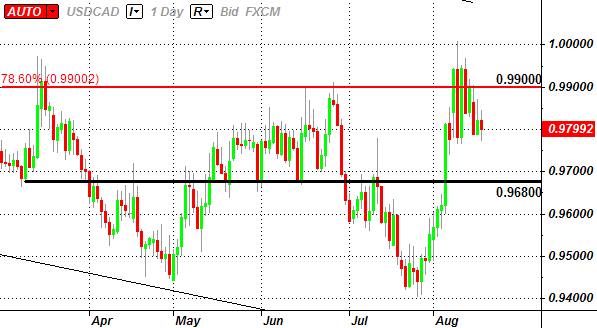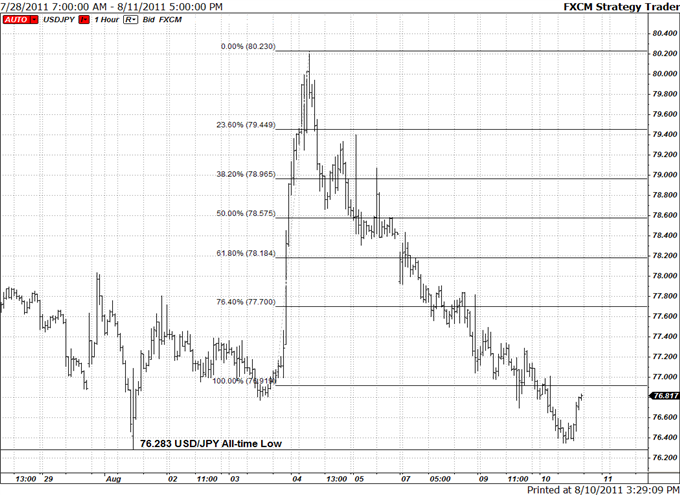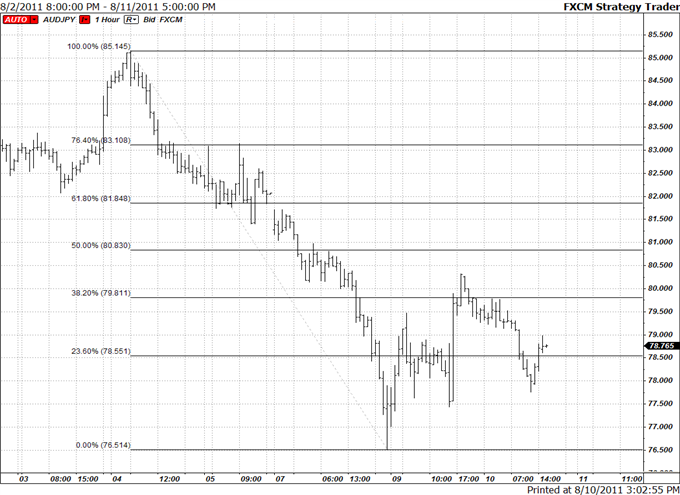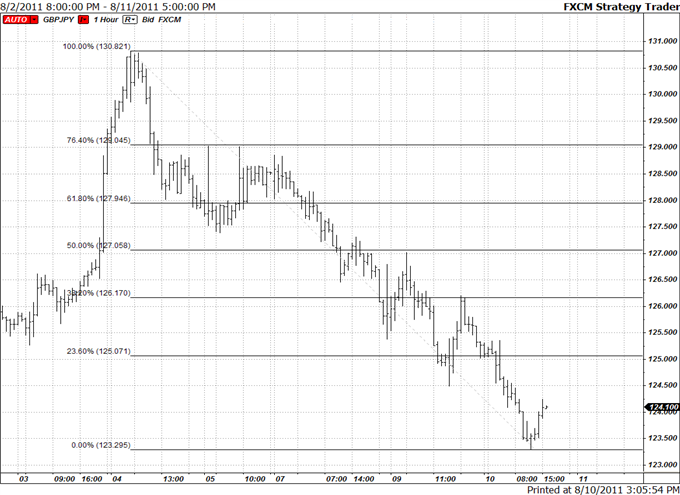Trading the News: Canada Consumer Price Index
What’s Expected:
Time of release: 08/19/2011 11:00 GMT, 7:00 EST
Primary Pair Impact:USDCAD
Expected: 2.8%
Previous: 3.1%
DailyFX Forecast: 2.6% to 3.0%
Why Is This Event Important:
Consumer prices in Canada are projected to increase at an annual pace of 2.8% after expanding 3.1% in June, and the slower rate of inflation is likely to spark a bearish reaction in the loonie as interest rate expectations falter. According to Credit Suisse overnight index swaps, market participants see borrowing costs in Canada falling by more than 25bp in the next 12-months, and we may see Bank of Canada Governor Mark Carney preserve his pledge to ‘carefully consider’ future rate hikes as policy makers curb their outlook for the region. However, an uptick in price growth could put increased pressure on the BoC to normalize monetary policy further, and the central bank may show an increased willingness to lift the benchmark interest rate from 1.00% in an effort to balance the risks for the economy.
Recent Economic Developments
The pickup in private sector consumption may encourage businesses to raise prices as they continue to cope with high input costs, and the near-term reversal in the USD/CAD may gather pace should we see a higher rate of inflation spur expectations for a rate hike. However, as businesses scale back on spending, the drop in global trade may drive firms to keep a lid on consumer prices, and price pressures may weaken further over the coming months as companies try to stimulate domestic demands. In turn, we may see the BoC carry its current policy into the following year, and Governor Carney may endorse keep the benchmark interest rate on hold well into 2013 as growth and inflation cool.
Potential Price Targets For The Release
How To Trade This Event Risk
Forecasts for a slower rate of inflation encourages a bearish outlook for the loonie, but an unexpected rise in consumer prices could set the stage for a long Canadian dollar trade as interest rate expectations resurface. Therefore, if the headline reading tips higher from the previous month, we will need to see a red, five-minute candle following the report to establish a short entry on two-lots of USD/CAD. Once these conditions are met, we will set the initial stop at the nearby swing high or a reasonable distance from the entry, and this risk will establish our first target. The second objective will be based on discretion, and we will move the stop on the second lot to breakeven once the first trade reaches its mark in order to preserve our profits.
In contrast, businesses may keep a lid on consumer prices in an effort to stimulate private sector consumption, and the slowdown in price growth may lead the BoC to retain its current policy stance throughout the remainder of the year as the central bank aims to encourage a sustainable recovery. As a result, if the headline reading for inflation grows less than 2.8%, we will carry out the same setup for a long dollar-loonie trade as the short position laid out above, just in reverse.




































.png)